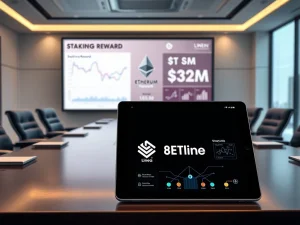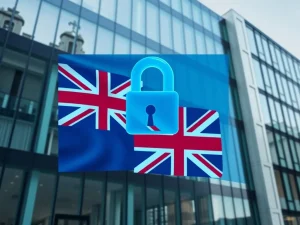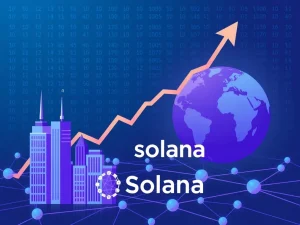Linea Token Holders: Joseph Lubin Unveils Promising Rewards Amidst 20% Price Dip

The cryptocurrency market often presents swift developments. Recently, the Linea token, a significant Layer 2 solution backed by Consensys, experienced a notable 20% price dip following its Token Generation Event (TGE). This downturn sparked immediate community discussion. However, Joseph Lubin, a pivotal figure in the blockchain space and founder of Consensys, swiftly stepped in. He teased potential future crypto rewards for dedicated Linea token holders. This move aims to reassure investors and foster long-term engagement within the Linea ecosystem. It also directly addresses concerns regarding the token’s immediate utility.
Understanding the Linea Token Generation Event (TGE)
The Linea blockchain, a zkEVM Layer 2 network, marked a significant milestone with its Token Generation Event (TGE) on Wednesday. This event introduced the LINEA token to the broader market. Typically, a TGE generates considerable excitement, yet it often brings price volatility. CoinGecko data clearly shows the initial market reaction. The Linea token reached a high of $0.046 shortly after its launch. However, it quickly faced selling pressure. At the time of writing, the Linea price hovered around $0.024. This represented a substantial 20% decline in just 24 hours. Such post-airdrop sell-offs are not uncommon in the crypto world. Many early recipients often choose to liquidate their tokens for immediate profit.
The project outlined its token distribution strategy. A significant 85% of LINEA tokens are allocated to the ecosystem. The remaining 15% goes to the Consensys treasury. This structure aims to empower the community and support the network’s growth. Nevertheless, the immediate price drop highlights market apprehension. It underscores the community’s desire for clear utility and long-term value propositions for the newly launched Linea token.
Joseph Lubin’s Strategic Tease of Future Rewards
Amidst the price volatility, Joseph Lubin, a key architect behind Linea and the founder of Consensys, offered a strategic message. He took to X (formerly Twitter) to address the community directly. Lubin teased the possibility of future crypto rewards for loyal Linea token holders. He indicated that long-term commitment could unlock additional distributions. These might include tokens from Consensys itself. Furthermore, other aligned ecosystem projects could also contribute to these future rewards. This announcement serves as a powerful incentive for current holders. It encourages them to retain their tokens despite the recent dip.
Lubin’s statement emphasized the importance of holding. He suggested that holding tokens signifies active community membership. It also indicates engagement in productive Linea economy activities. “If we notice, at some date in the future, that you’ve held n LINEA tokens for m days, that just might lead to another token landing in your account,” Lubin wrote. This implies a clear, data-driven approach to rewarding consistent support. Moreover, he hinted at a joint initiative. MetaMask and Linea are preparing something together. This collaboration could further integrate the Linea ecosystem into the broader Consensys product suite. Such a partnership would undoubtedly enhance the token’s visibility and potential utility.
Community Voices: The Crucial Debate on Linea Utility
The community’s response to the Linea token’s launch was swift and vocal. Many members quickly raised questions regarding the token’s immediate utility. One user specifically tagged Joseph Lubin on X. They urged the Linea team to implement staking and lending functionalities. The user articulated a common sentiment: “Users do not know what to do with the Linea they are holding.” This highlights a critical challenge for new tokens. Without clear use cases, holders often feel compelled to sell. The community member emphasized the need for platforms that enable Linea lending or staking. Such features would provide tangible reasons for users to hold and interact with their tokens.
Another user expressed frustration, accusing Linea of behaving like a “memecoin.” This strong label reflects the perception that the token currently lacks fundamental utility. Instead, it seems to promise only more tokens for holding. This sentiment contrasts sharply with the vision of a robust, functional blockchain ecosystem. Meanwhile, other users proposed alternative strategies. They suggested token buybacks instead of simply distributing more tokens. An X user argued that buyback mechanisms might more effectively incentivize long-term holding. This approach would reduce supply and potentially increase value. The debate underscores the complexity of managing token economics. It also highlights the importance of addressing community expectations proactively. Providing clear utility pathways remains paramount for any new cryptocurrency project.
Post-Airdrop Volatility: Analyzing the Linea Price Dip
The recent Linea price movement clearly illustrates the inherent volatility of new crypto assets. After its TGE, the token experienced a rapid ascent. It reached an initial peak of $0.046. This initial surge often occurs as early adopters and speculative traders enter the market. However, this upward momentum was short-lived. CoinGecko data confirms a subsequent sharp decline. The Linea token dropped over 20% in just 24 hours. It settled at approximately $0.024 at the time of writing. This significant dip is a common phenomenon in the crypto space. It is particularly prevalent following airdrops or TGEs.
Several factors contribute to such post-airdrop selling pressure. Many recipients receive tokens for free or at a very low cost. They therefore possess a strong incentive to sell for immediate profit. This creates substantial sell-side pressure. Furthermore, without established utility or clear long-term incentives, some holders may view the token as a short-term speculative asset. They might quickly exit their positions. This ‘sell the news’ dynamic can temporarily depress prices. It can also create a challenging environment for early investors. The market often takes time to discover a stable price point. This period allows for a more accurate reflection of the token’s perceived value and future prospects. Consequently, the Linea team faces the task of stabilizing the price. They must also build confidence through concrete utility and ecosystem development.
Consensys’s Vision for Linea’s Ecosystem Growth
Consensys, a leading blockchain software company, stands firmly behind Linea. This backing provides significant credibility and resources. Consensys plays a crucial role in the broader Ethereum ecosystem. It develops essential infrastructure like MetaMask and Infura. Linea represents a key component of Consensys’s strategy. It aims to scale Ethereum through advanced Layer 2 solutions. Joseph Lubin’s statements align with this long-term vision. He emphasizes building a robust and engaged community around Linea. The promise of future crypto rewards serves multiple purposes. It incentivizes holding, thus reducing selling pressure. It also fosters a sense of loyalty among early adopters. This loyalty is vital for any burgeoning blockchain network.
The proposed distributions, including tokens from Consensys and its aligned projects, suggest a strategic integration. This integration aims to tie Linea more closely into the wider Consensys ecosystem. Such a move could unlock new opportunities for Linea holders. It could also provide access to a broader suite of decentralized applications and services. The hinted collaboration between MetaMask and Linea is particularly noteworthy. MetaMask is the world’s most popular self-custodial wallet. Its integration with Linea could dramatically enhance user experience. It would also streamline access to the Linea network. This strategic alignment underscores Consensys’s commitment. They aim to ensure Linea’s long-term success and its pivotal role in the future of decentralized finance.
Exploring Alternative Strategies: Buybacks vs. New Token Distributions
The community’s suggestions for addressing the Linea token’s utility and price stability are diverse. Some users strongly advocate for token buybacks. A buyback strategy involves the project repurchasing its own tokens from the open market. This action reduces the circulating supply. Consequently, it can increase the value of the remaining tokens. Proponents argue that buybacks directly benefit existing holders. They also signal confidence from the project team. This approach might offer a more immediate and tangible impact on price. It could encourage users to hold their tokens longer.
However, Joseph Lubin’s proposed strategy differs. He suggests rewarding long-term holders with distributions of new tokens. These could come from Consensys or other ecosystem projects. This approach aims to broaden the value proposition. It offers diversification to holders. It also strengthens ties across the Consensys ecosystem. The benefit here is the potential for growth across multiple projects. This might foster a more interconnected and resilient ecosystem. Yet, some critics argue that simply distributing more tokens without clear utility might dilute value. It could also be perceived as a temporary fix. Both strategies possess merits and drawbacks. The optimal choice often depends on the project’s specific goals. It also depends on the prevailing market conditions and community sentiment. Linea’s team must carefully weigh these options. They must decide how best to build sustainable value and maintain community trust.
In conclusion, the Linea token’s initial market performance highlights common challenges for new crypto assets. Joseph Lubin’s swift response, teasing future crypto rewards, demonstrates a proactive approach. It aims to address community concerns and foster long-term commitment. The ongoing dialogue around Linea utility, coupled with strategic collaborations like that with MetaMask, will be crucial. These efforts will determine Linea’s trajectory in the competitive Layer 2 landscape. As the ecosystem matures, the focus will remain on delivering tangible value and robust use cases for the Linea token. This will ultimately solidify its position as a vital component of the decentralized future.










